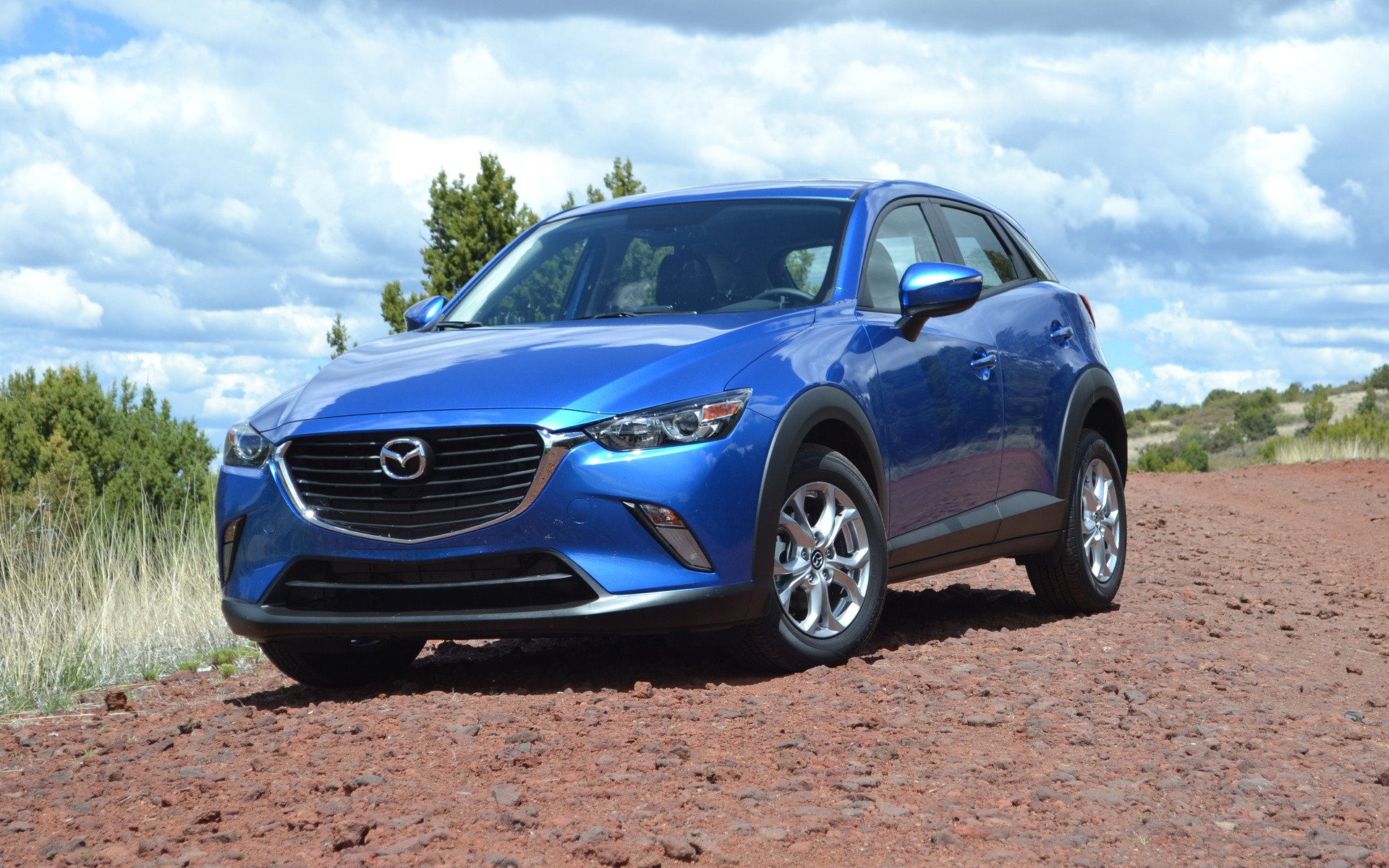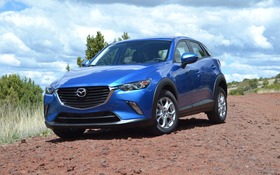2016 Mazda CX-3: Rising Star!

| Strong points |
|
|---|---|
| Weak points |
|
Introducing a new model is always a big deal for a manufacturer, and that goes double when it's a vehicle in a popular and competitive segment. The CX-3’s arrival is very important for Mazda, which sees the model as a potentially spearhead for the automaker going forward. It also represents a unique opportunity for the Japanese manufacturer to quickly position itself in the very recent but already spirited subcompact SUV category.
With Honda producing the HR-V and Jeep the Renegade, Mazda is putting its faith in what made it successful in the past: proposing a stylish and fun-to-drive vehicle. This time, they didn’t want to repeat the same mistake they made with the Mazda2 and show up late to the party. The manufacturer is arriving early with the intention of getting a solid foothold in the category. After a few hundred kilometres at the wheel of this “baby SUV,” we can attest to the fact that the CX-3 has what it takes to win people over.
CX-3 or CX-2?
Don’t let the name fool you: the CX-3 has its roots, not in the Mazda3, but in the Mazda2. Yes, it’s true, the CX-3 is based on the platform of a subcompact car, which explains its slight size. The goal is to attract buyers who appreciate both the virtues of small cars and the characteristics of an SUV, specifically the higher driving position and, of course, the possibility of all-wheel drive.
Size matters, and the CX-3 is somewhere between the Mazda2 and the Mazda3. Only when you put it side by side with the CX-5 do you realize how much smaller it really is. Despite its size, the designers managed to make its style simultaneously stocky, dynamic and attractive. The 2016 CX-3 includes numerous style features borrowed from the brand’s other models, including an elongated nose and smaller windows.
The key feature that adds to the model’s dynamism is its wheels, which are located at the extremities and seem very big. This effect is reinforced by the grey body trim around the fenders. The vehicle looks like it’s ready to pounce, and this effect is accentuated by the plunging roof and very high beltline. The available exterior colours are interesting, but we would have liked a few bright colours, a little like the Nissan Juke.
One engine, one transmission
The choice is a simple one in the case of the CX-3 since there’s just one possible engine, the very same 2.0-litre SKYACTIV four-cylinder found in the base trim of the CX-5. It develops 146 horsepower at a rather high engine speed of 6,000 rpm. That’s less horsepower than the CX-5, but with the CX-3’s more compact size the engineers had to use more bends in the exhaust, which restricts gas expulsion. However, the 146 lbs.-ft. of torque makes it more appealing.
The only available transmission is a six-speed automatic. The manufacturer tells us that only 5% of CX-3 buyers would opt for the manual gearbox, so none is offered. As outrageous as it may seem, after test driving it, we have to wonder what more a manual could bring to the table. Nothing’s definitive though, Mazda could easily change its mind next year and offer a standard transmission (it wouldn’t be the first time that’s happened).
The CX-3 GX ($20,695) isn’t half-bad for an entry-level model. It has an automatic transmission, air conditioning, multimedia display screen and even 16-inch wheels. It’s better than what many competitors are offering for a base trim. The GS will definitely be the most popular version while the GT is again the most posh. All-wheel drive comes factory standard for the GT and on option for the others. You’ll pay a little more than $24,500 for a CX-3 GS AWD, which is an interesting price compared to the CX-5 and the competition.
On board, the attention to detail is obvious. The dashboard is very nice and the choice of materials adds to the impression of luxury. It’s even more noticeable in the higher-end versions thanks to their two-tone colour scheme. We like the simplicity of the controls and the instrumentation that differs in the GT version. Despite its size, there is lots of space for the passengers in front, and that goes for head room, too. However, the same can’t be said for the back, which represents the main compromise versus “big” compact SUVs. Then again, that goes for all subcompact SUVs. The CX-3 is not the most family-oriented vehicle and the cargo space remains limited, primarily due to its very high floor.
The smallest of the SKYACTIV utility vehicles
The CX-3 benefits from all the components of Mazda's SKYACTIV system, a collection of elements aimed at minimizing fuel consumption. Certain parts had to be revised in light of the vehicle’s size, such as the transmission that is lighter and more compact. Mazda claims its fuel efficiency numbers are 8.8/7.3 litres city/highway with the AWD, and these figures seem realistic based on our initial test drives. Mazda is no longer known for making gas guzzlers.
At the wheel, you quickly find a good driving position by moving the seat and, more importantly, adjusting the telescopic steering wheel. Visibility is decent, but a little less so in the ¾ rear windows, which makes the factory-standard back-up camera a welcome addition. On the road, you quickly understand that the powertrain was chosen primarily to maximize fuel consumption. It has some power, but the engine is definitely not the reason for the vehicle's dynamism. Pick-up at cruising speed really suffers, but this is less noticeable at lower speeds. Fortunately, the generous torque helps, as does the automatic transmission that gets the most out of the available power and never lags. A Sport mode delays the transmission's gear changes and adds a feeling of control. By maintaining the torque in the optimal gear range, reaction is a tad faster when accelerating. In the GT version, controls behind the steering wheel allow you to change gears manually. Basically, if some day Mazda decides to offer the 2.5-litre four-cylinder, we will approve!
The CX-3 has what it takes to please and you shouldn't be surprised to see several on the road. In addition to its exciting style, the equipment level and price range have been carefully studied. It’s not uncommon to find small models sold too expensively, which often undermines what makes them attractive in the first place.











